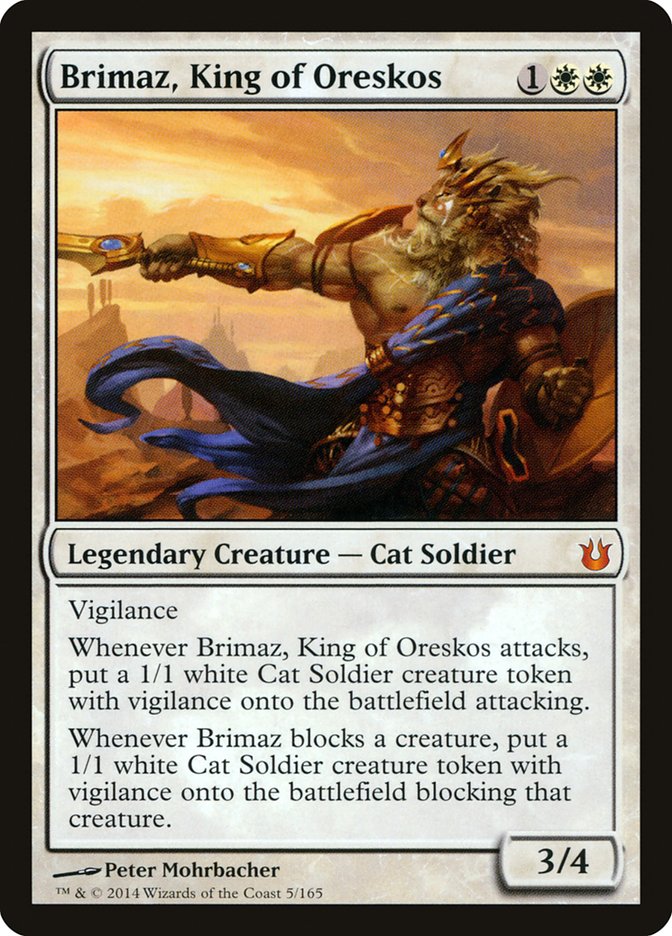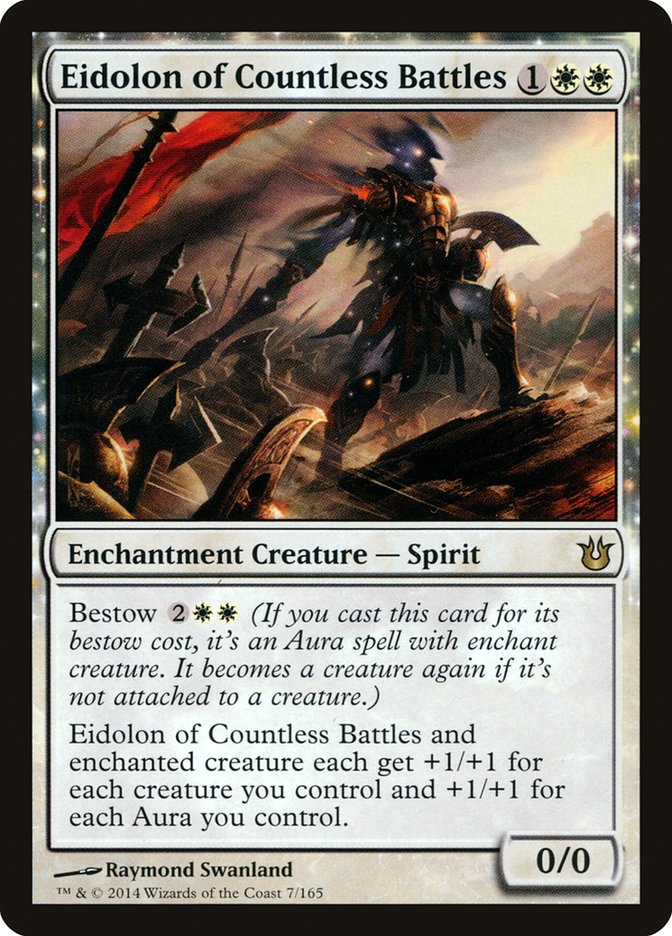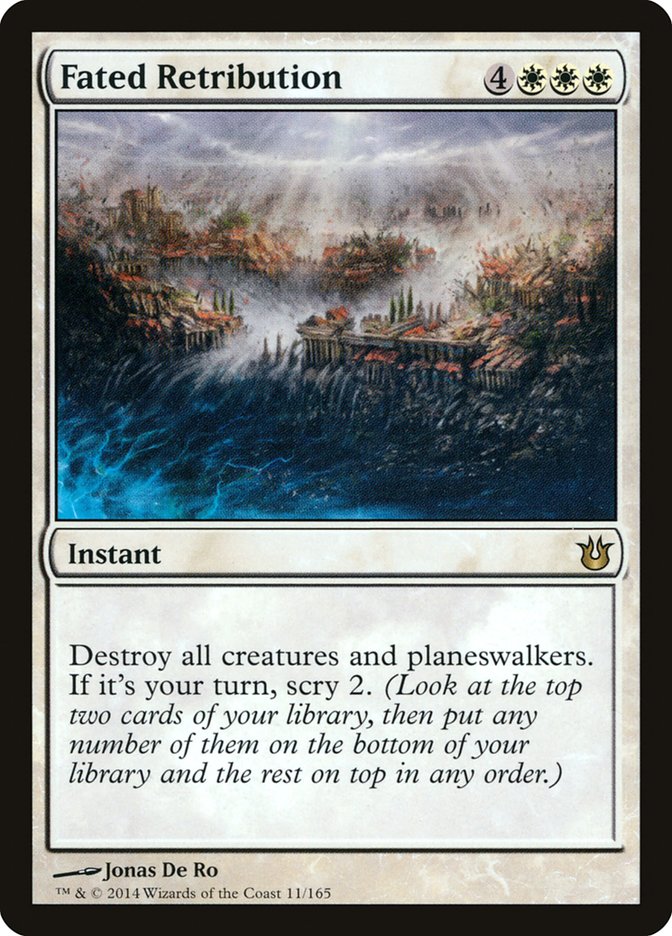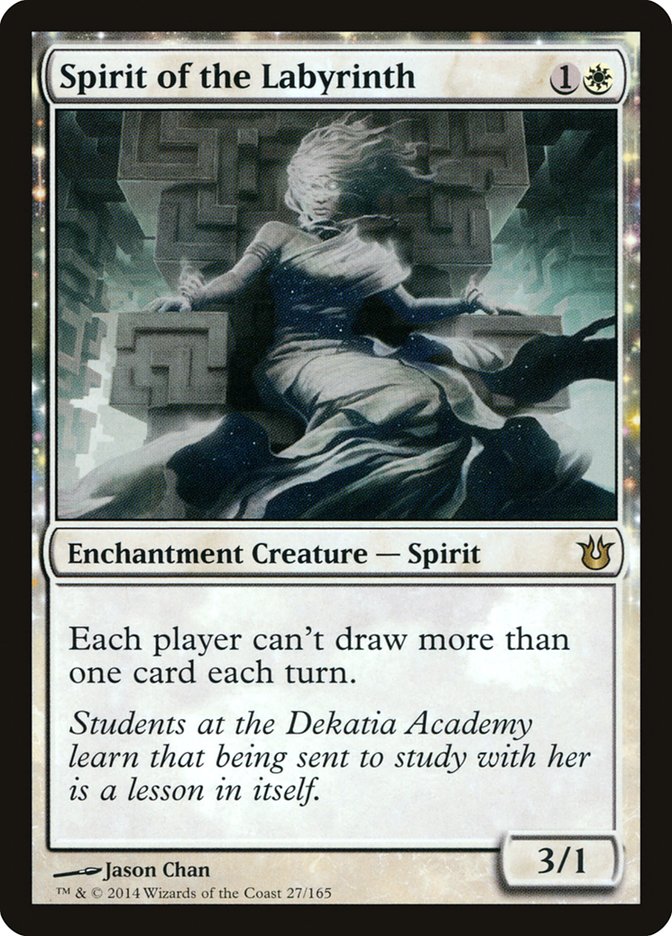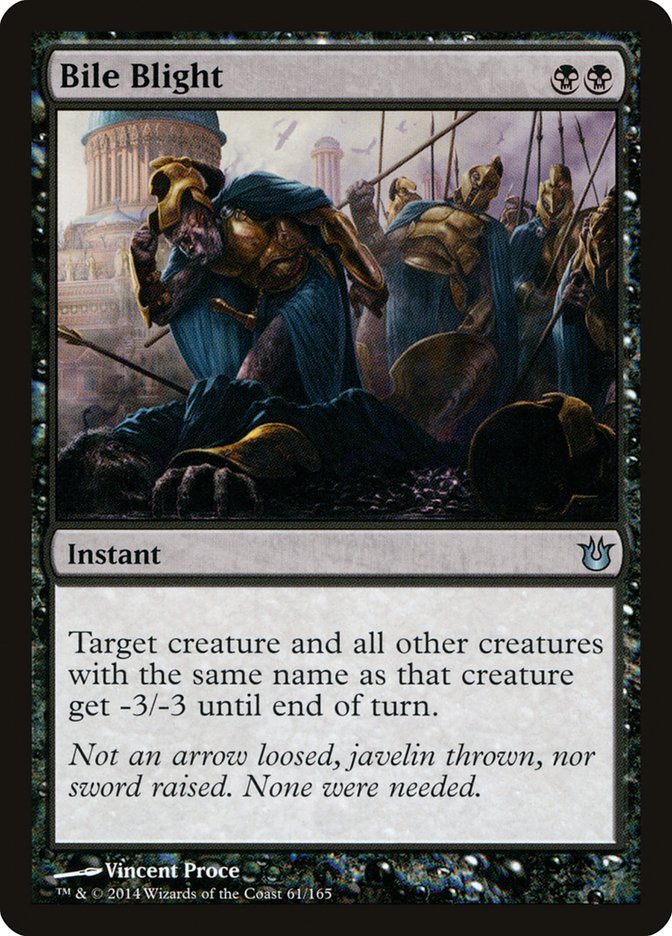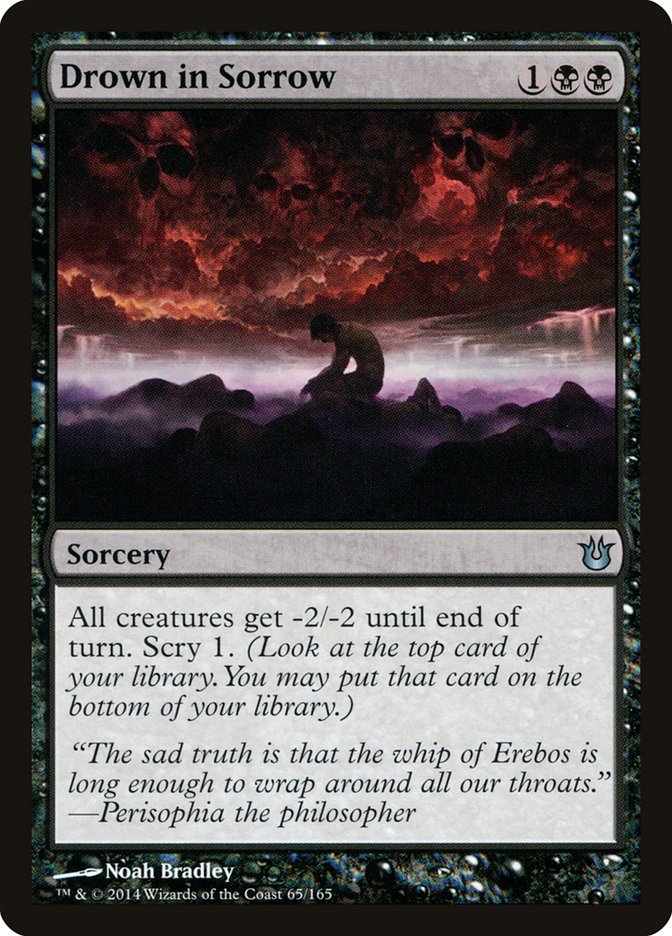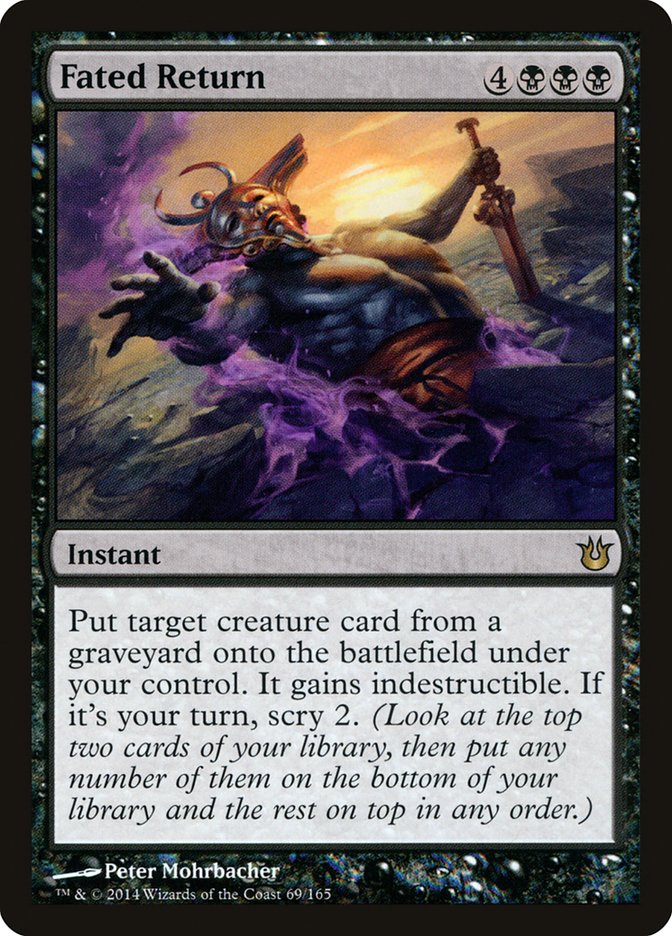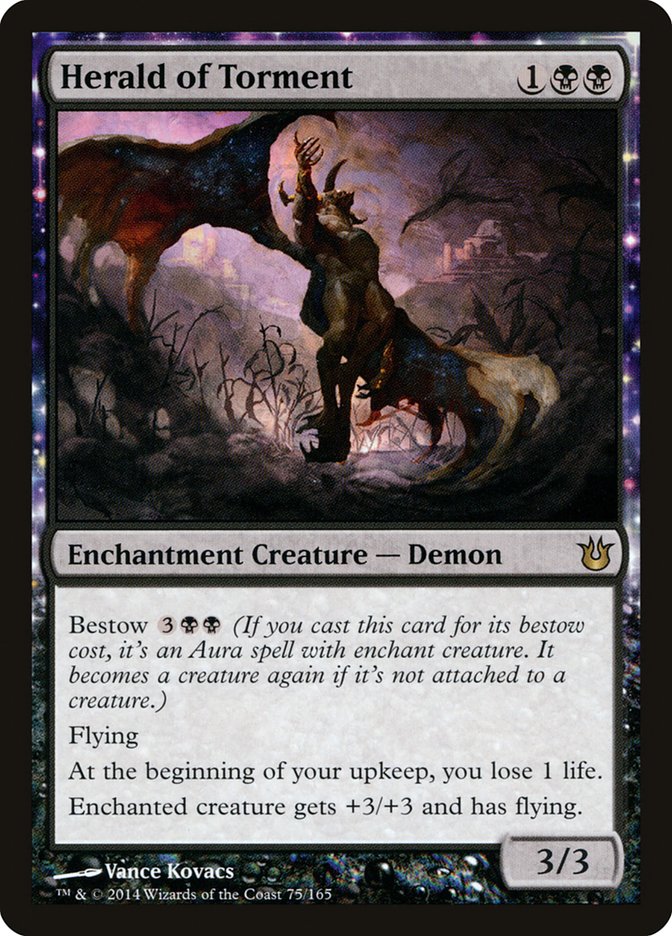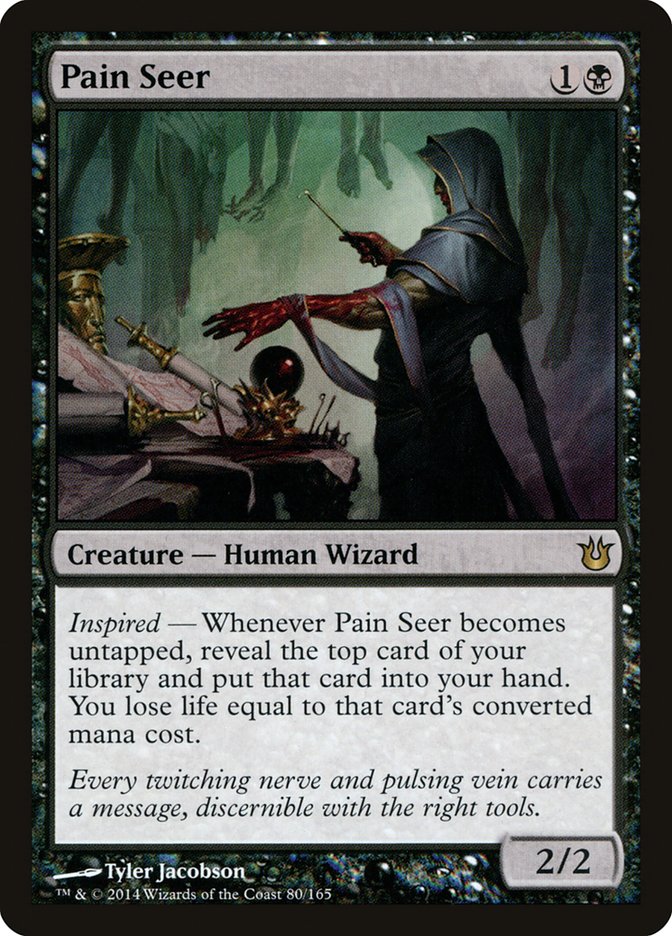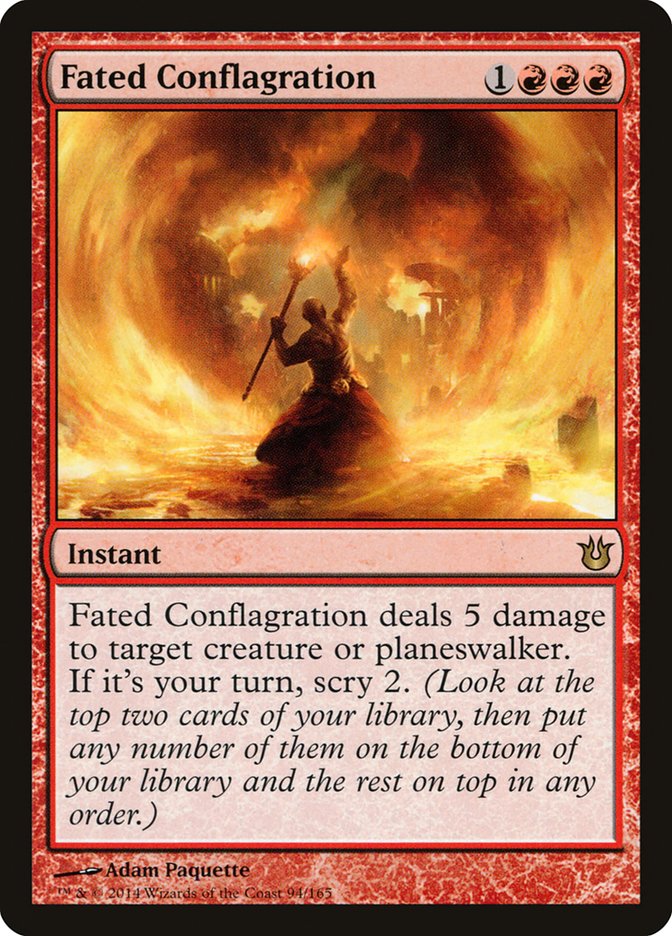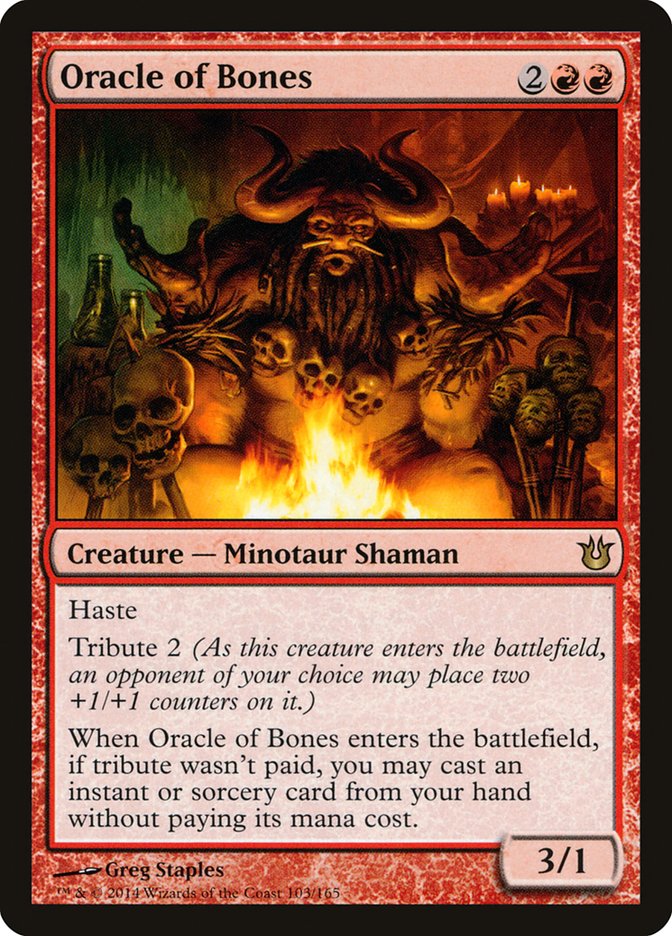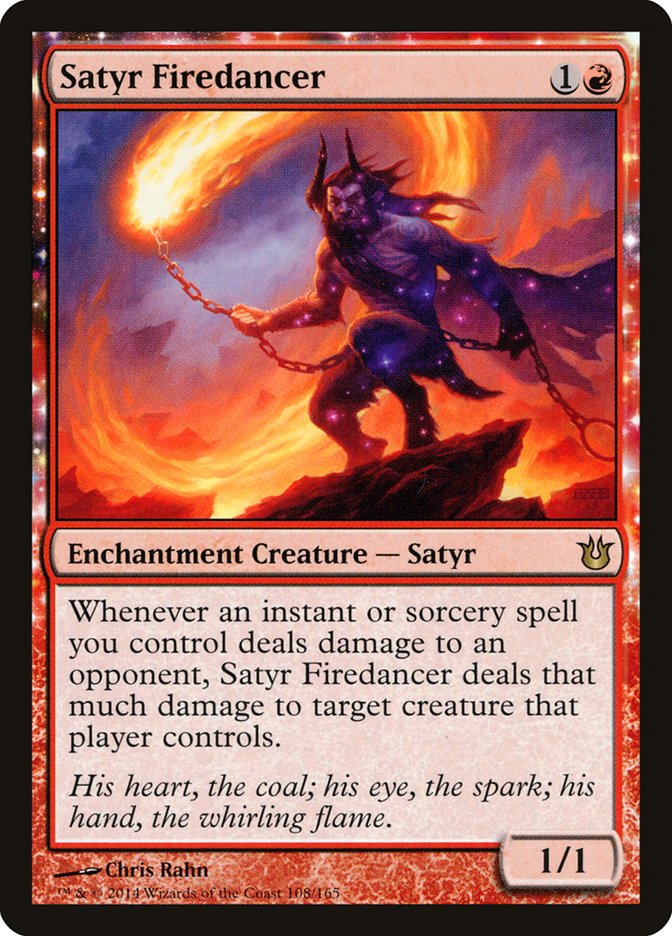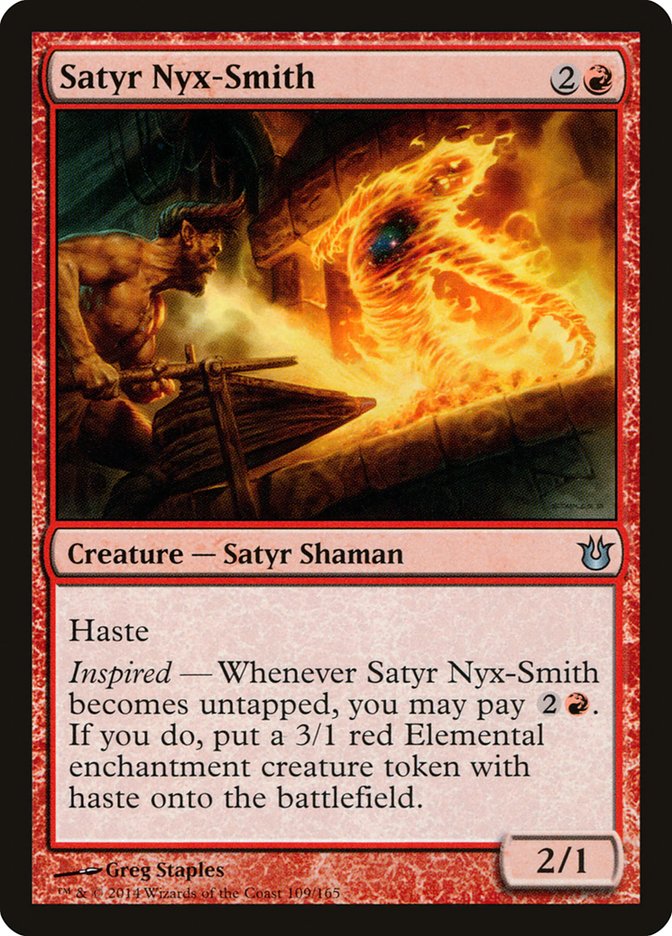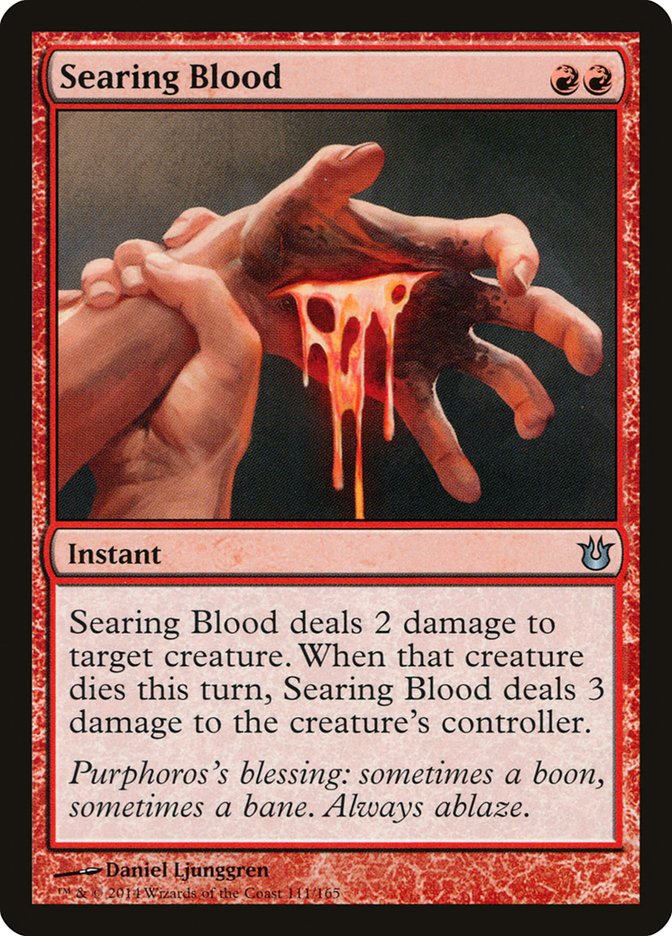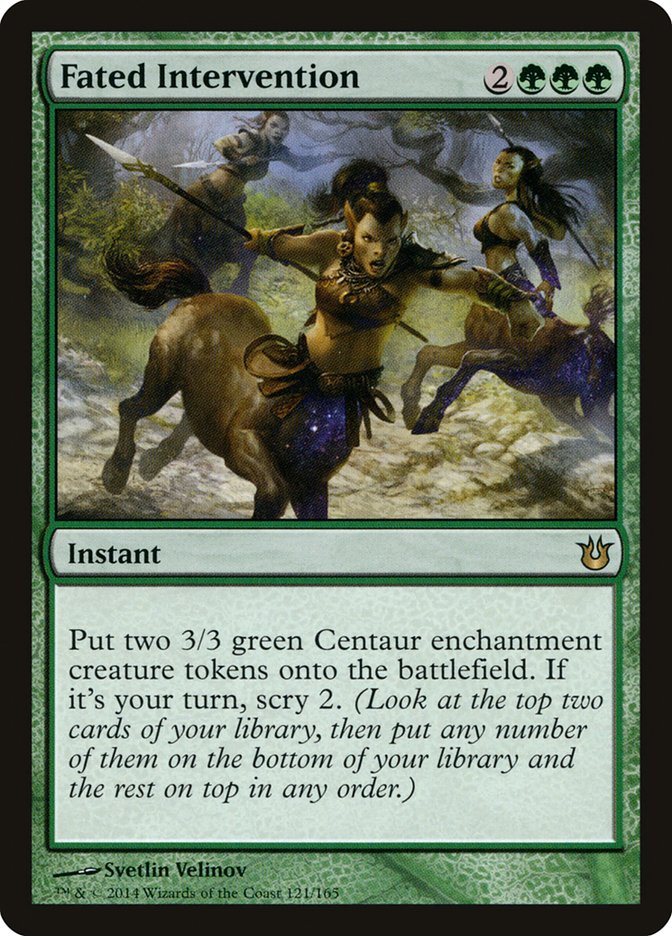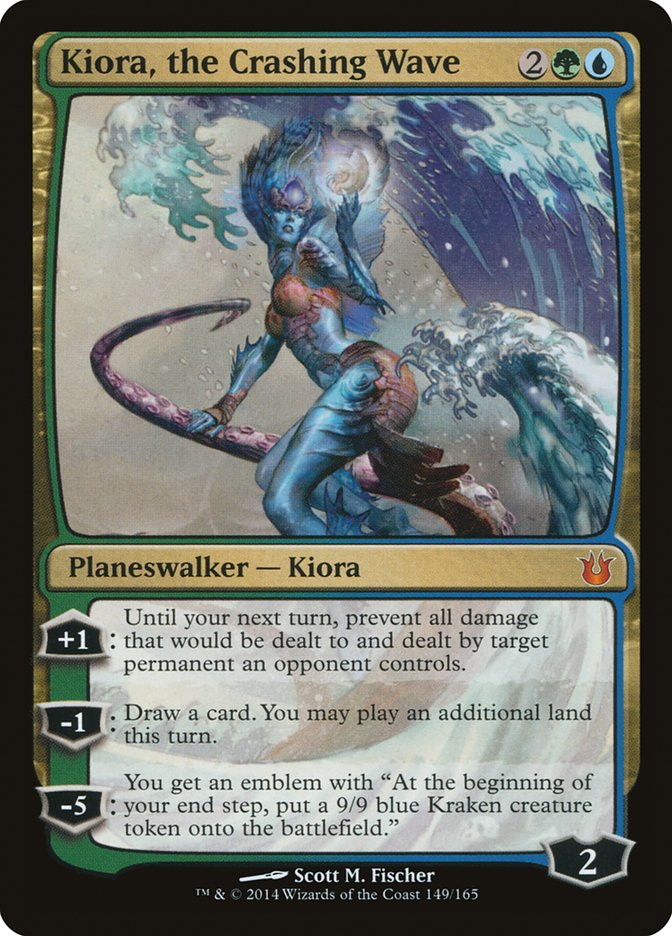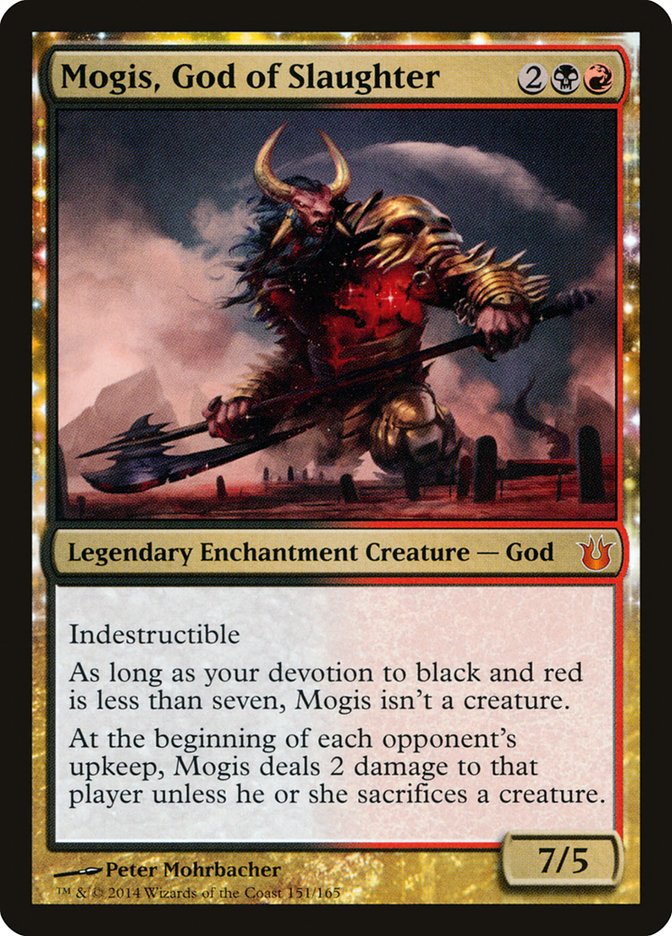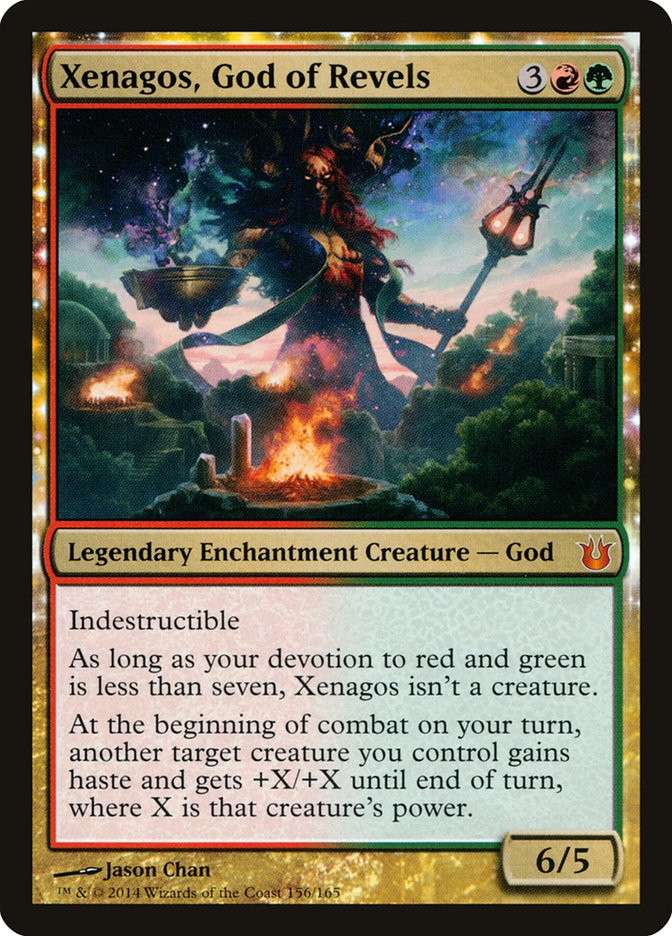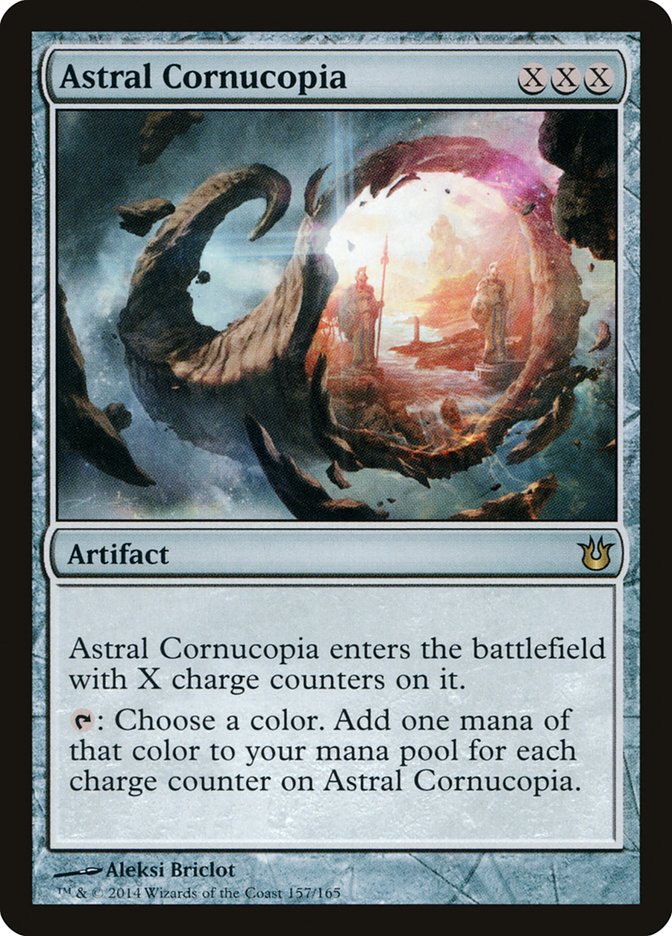With Born of the Gods’ Prerelease coming up this weekend, it’s time to consider the set in the context of Cube.
Overall, Born of the Gods is a weaker set than Theros. There aren’t really any "easy upgrades" to old favorites like Soldier of the Pantheon, Spear of Heliod, and Firedrinker Satyr, which have become staples or near staples in Cubes. There are a lot fewer Cube cards in Born of the Gods; a lot of cards are mostly blanks due to the big mechanics of the set—heroic and inspired—many of which play in a near parasitic style to work mostly within the context of the set’s Limited format.
White
Brimaz, King of Oreskos
Brimaz is arguably white’s best three-drop, possibly behind Mirran Crusader. Three-mana cards have been historically weaker compared to their two- and four-mana brethren since power tends to spike at those costs. There’s the argument trope that it dies to nonred removal, but it still provides a ton of value for the cost. There may be 2/2s that can easily deal with a 1/1 with vigilance, but this ignores the fact that you’re getting attacked for three with something that could block. Granted, the ability to make blockers won’t be as relevant since it’ll mostly just help take down 4/4s, but it’s still not a bad thing to have in addition to how powerful it is on offense, making it an easy staple.
Eidolon of Countless Battles
When considering the context of the card in Cube, its home is in white aggressive decks as a Crusader of Odric and a type of Angelic Destiny. The main problem is that the card is underpowered in both modes, and when looking at it as a four-drop, it’s at arguably the most competitive mana cost in Cube. With flexible cards like Burst Lightning and Everflowing Chalice, those cards don’t excel at their roles, but they perform a base function that the deck wants while providing a bit of upside through flexibility.
For example, Burst Lightning performs the role of Shock in red decks. It’s relatively inefficient when compared to things like Lightning Bolt and Chain Lightning, but it’s still a good card because the base mode of dealing two damage for one red is what red decks are fine with and the kicker is just, well, kicker.
In terms of the base modes, Crusader of Odric and a poor man’s Angelic Destiny aren’t comparable with what’s on curve and what white aggro decks want to do in Cube, making it a weak Cube card.
Fated Retribution
The main problem with Fated Retribution is that it’s just too expensive. Instant speed is excellent, but the overall cost of seven mana is extremely high in a format where there’s a glut of even six-mana sweepers like Catastrophe and Akroma’s Vengeance. The most obvious analog is Rout, which can sweep at seven mana, but one of the better things about it is that it had a solid five-mana sorcery speed mode, which while not as efficient as the four-mana sweepers was still very good at that mode. Being able to use it at sorcery speed is nice to give scry 2 with, but it’s mostly not worth it. It’s better than some of the marginal sweepers like the awkward Austere Command, but it’s still a bit pricey.
Loyal Pegasus
Jackal Familiar was printed years ago to little fanfare—even in Pauper—because while it was a two-power creature for one mana it was very inconsistent. Since one of the primary draws of those early-drops is being able to start attacking for two on turn 2, which Jackal Familiar couldn’t do, it was a weak card. Unfortunately, Loyal Pegasus can’t attack on turn 2 for two either. Its flying is a nice upgrade, and white has more ways to get around the drawback by being able to generate tokens. But since the card can’t operate with the primary axis of operation that white aggro decks operate on, it’s not a very good card for that deck and a poor Cube card.
Spirit of the Labyrinth
I previously talked about hosers in Cube and how unless you have a pretty big Cube (720+) you don’t usually have room to spare for poor cards like Combust and Deathmark, but cards like Spirit of the Labyrinth are much better for that task. The lion’s share of cantrips and cards that draw more than one card are in blue, so it’s mostly a blue hoser with some side effects of hosing green cards like Sylvan Library and the middle ability on Garruk, Primal Hunter.
While being a 3/1 isn’t unprecedented like it was during the time of Blade of the Sixth Pride and Accorder Paladin, those stats aren’t embarrassing either and help white aggressive deck operate on their main goals. It’s a card that may not be able to be included in smaller Cubes and may not have a long shelf life in Cubes that do, but it’s a nice card that can help bolster aggressive decks even if in most matches it’s a Blade of the Sixth Pride that dies to Disenchant since it’s still attacking for three.
Blue
Tromokratis
Tromokratis is an example of a very solidly designed card that helps get around the problem of tapping out for a large threat only to have it die to a removal spell. An opponent may assume that you have countermagic to protect it, and its ability can give you time to draw into the countermagic to protect it and evasion can make racing very awkward for an opponent. That said, it doesn’t quite have the same effect on a board that a card like Palinchron or Sphinx of Uthuun has, and when there’s room for only so many control finishers, it may be difficult to find room for Tromokratis.
Whelming Wave
While the difference between four mana and five mana for Evacuation may be a wide gap, the fact that Whelming Wave doesn’t really provide much card advantage and makes it harder to come out ahead makes it weak. Don’t be fooled by some creatures being able to stay, as those types of creatures don’t tend to be seen often in Cube.
Black
Bile Blight
Bile Blight just isn’t very good in Cube, unlike what it’ll likely do in Constructed formats. While it’s true that it can hit multiple permanents, think back to how often cards like Maelstrom Pulse and Detention Sphere hit multiples in the times that you’ve seen them in Cube. Not often, right? Imagine that with a card that has fewer targets and you’ll see why this card isn’t good for Cube.
Drown in Sorrow
Scry 1 helped push some marginal cards like Cancel and Urborg Volcano into the solid range; however, unlike cards like Burst Lightning and Everflowing Chalice, the added bonus isn’t enough to make Drown in Sorrow playable in Cubes when Infest already wasn’t. For Drown in Sorrow, it could be argued that the scry 1 is enough to turn Infest into a Cube-worthy card, but even with the scry ability the base effect is a bit too low impact. It may have had a chance in a world without Toxic Deluge, but with it Drown is not really necessary. Drown in Sorrow is a tool that can be added based on how much the effect is needed to curtail the plans of aggressive decks.
Fated Return
Being able to reanimate from an opponent’s graveyard at instant speed is nice, but seven mana is still very high for the effect and too high for it in Cube. Miraculous Recovery sees little Cube play despite giving the creature a counter at only 4W (it only hits your graveyard however). The effect is likely at its best in control mirrors as a way to commit to a spell without needing to tap out on a main phase where there will likely be a big finisher in the graveyard at that point. But the cost is still too high, and there isn’t really a need for a card that’s only good in control mirrors.
Forlorn Pseudamma
A problem with the inspired mechanic is a lot of the cards actually act as saboteur creatures because outside of corner cases like having cards like Opposition, Tangle Wire, and Pestermite the inspired trigger will only really happen by way of attacking and not dying, an analogy that I made when talking about Geist of Saint Traft and that designer Erik Lauer had talked about in 2011 when comparing Geist to traditional saboteurs like Ophidian.
Justin Parnell and I have discussed how a lot of saboteur cards without evasion usually disappoint because it’s hard to get value out of those kinds of cards if they just get stymied by a 3/3; even a card like Liliana’s Reaver was a disappointment in Cube despite impressive-looking stats because it just could never quite get there. Inspired ends up being worse than a saboteur trigger since you don’t get to reap the benefits until your next turn, making a lot of inspired cards suboptimal for Cube.
Forlorn Pseudamma helps get around this by having intimidate as a method of evasion, but it falls short because it has a pretty small body for the cost and requires a high mana cost to get value out of it, which since it triggers on your upkeep commits you to that plan if you do end up paying the cost (and as we’ve learned from cards like Hammer of Bogardan, needing to commit mana-wise on your upkeep can be incredibly awkward based on your hand or potential topdecks). It’s too slow even for the decks that use sacrificing as a resource since cards like Ophiomancer at least perform the role of a roadblock admirably, which makes this a poor Cube card.
Herald of Torment
When discussing Eidolon of Endless Battles, I talked about how flexibility and base modes can help with evaluation of flexible cards. If a split card of Crusader of Odric and an awkward Angelic Destiny aren’t good for Cube, how does a split card of Serendib Efreet with minus one toughness and Drake Umbra that instead leaves behind a Serendib Efreet fare for Cube?
Surprisingly, pretty decently.
One of the things that I found with Herald of Torment was how despite being worse in the abstract than Serendib Efreet it losing a toughness and being harder to cast wasn’t that big of a deal in terms of its base effect—being a 3/3 flier. It’s true that in black there can be a lot of life-loss effects and having a lot of them in the same deck can be detrimental, but I found that in black aggressive decks, the drawback wasn’t a big detriment to the card’s power.
I also found that unlike with the awkward Angelic Destiny mode the bestow ability worked with the black aggressive deck’s goals by sending small creatures into the air (like turning a Lightning Mauler into a 5/4 that gave other things haste) and helping to shore up a weakness in the deck. It could also be because of the weakness of threes in black since there aren’t many black threes that are combat oriented (like Geralf’s Messenger) but more utility creatures a la Bone Shredder and Gatekeeper of Malakir. All in all, I was pleasantly surprised with how Herald of Torment played out. Cubes without black aggro support may end up disappointed by it, but I was happy with it in my Cube.
Pain Seer
Pain Seer’s cheap cost makes the possibility of extracting value from inspired not as difficulty as other inspired cards by helping it get onboard before blockers can come online, but it still has the same problems in that you don’t reap the benefits until the next turn. Due to the lack of evasion, it’s also quite poor when you’re behind on board and the opponent has a blocker that can just kill it.
Red
Fated Conflagration
During development, Fated Conflagration was likely deemed too powerful if it hit players, but as is it’s a poor Hero’s Downfall at a higher harder-to-cast mana cost. Also, due to red’s aggressive nature, it tends to view four mana as where it wants its top of the curve to be, and Fated Conflagration isn’t very good at that role. One thing that it can do is to take care of x/5s in more midrange and control red decks, particularly those with Wildfire or Burning of Xinye, since it makes sure that the opponent can’t break the symmetrical effect of those spells. Still, its effect is pretty poor when compared to those, and I wouldn’t recommend it in Cube.
Flame-Wreathed Phoenix
Four mana in red, particularly in aggressive decks, is a very competitive mana slot whose ranks haven’t been infiltrated very often, with none since Hellrider, due to them decks only really needing a curve topper or two. Most of the existing four-mana options in red, such as Hellrider, Koth of the Hammer, and Hero of Oxid Ridge, are better, and Flame-Wreathed Phoenix will play out as a 5/5 flyer with a drawback of not only being irrelevant on a given board state but being too low impact for a board state or the opponent just giving you a 3/3 haster if the they don’t want to pay tribute.
Oracle of Bones
Oracle of Bones is one of the better-designed Tribute creatures because it works on unknown information of what you may have in your hand or deck (especially in game 1), whereas a lot of the other tribute cards mainly deal with on-board information, which makes the decision points pretty easy for an opponent like with Flame-Wreathed Phoenix. It’s still likely easy to make decisions on which side of the tribute to let the Oracle of Bones controller have, but the unknown information could cause some awkwardness for the person who must pay tribute.
It’s very unlikely that the Oracle of Bones player will have a Cruel Ultimatum in the same deck and if so is likely a deckbuilding error. However, something like a Flame Javelin or a possibly morbid Brimstone Volley isn’t unrealistic to expect and could make for some interesting decisions. That said, due to the competition in red fours, it still has little hope for Cube.
Reckless Reveler
A functional reprint of Torch Fiend that should find a home in many Cubes due to its cheap ability to kill artifacts, especially power. Due to Cubes getting a lot of good red two-drops in the past few years, their importance has dwindled, and therefore I could see both this card and Torch Fiend leaving a lot of Cubes in the next year or so. But at least for now, I’m happy to have both in my list.
Satyr Firedancer
Satyr Firedancer is an example of a card that will have a hard time transitioning from the role where a deck can be constructed around it to Cube due to not having enough cards to make it work. Red sections in Cube are filled to the brim with direct damage spells, but they still don’t have enough to make Satyr Firedancer trigger reliably. It may be detrimental to a red section to try to support Satyr Firedancer with enough burn spells to work, and doubly so since you’ll probably need to use direct damage on blockers to clear a path. It being limited to only damage dealing spells and having only one power are major strikes against it for aggressive decks.
Satyr Nyx-Smith
The same problems that Forlorn Pseudamma have apply to Satyr Nix-Smith from it having weak stats and requiring you to commit a lot of mana before your draw step. Red threes are shallower than red fours, but it still has the same problems that the weak inspired cards have by being poor saboteur creatures.
Searing Blood
The closest analog is to Searing Blaze, a reference made in Searing Blood’s flavor text. Let’s be honest—most of the time Searing Blaze was a sorcery unless you had a ton of fetch lands, so Searing Blood being an instant despite appearing to be the same as Searing Blaze is actually a bonus on Searing Blood’s case. Because there are typically value 2/2s and smaller creatures that tend to hang around the battlefield, it isn’t hard to find targets for Searing Blood, and in red aggressive decks usually getting an annoying blocker out of the way and hitting an opponent for three is a very good deal. It’s a welcome addition to red aggro decks in Cube.
Green
Courser of Kruphix
As discussed earlier with Oreskos, three-drops have been on the weak side, and green is no exception. It’s unfortunate since due to green having a plethora of one-mana dorks they plan to go from one mana to three to five or six mana, but the three-mana effects tend to be underwhelming. Courser can’t chain land drops and can’t let you end up with two-plus mana like Oracle of Mul Daya, but it does similar things by being able to make live draws better (with the drawback of showing the opponent your draws, but that’s not really a big deal) and working along with what green ramp decks want to do—having a body that blocks well, gaining life versus aggressive decks, and attacking for two if need be—making it a very welcome addition to green ramp decks.
Fated Intervention
One of the nice things about this is that it’s a nice way to ambush any opposing attackers, and like with Fated Return, it lets you pick fights in slower matchups when you don’t want to tap out. It provides a different angle of attack since most five-drops for green midrange decks tend to be sorcery speed like Thragtusk, but it still isn’t compelling enough to make it a high Cube pick since the 3/3s can be outclassed quickly by the monsters at six mana like the Titans and Wurmcoil Engine and planeswalkers like Elspeth, Sun’s Champion. Like with Spirit of the Labyrinth, it’s a tool that’s available for Cube designers, but it isn’t one that has the raw power to make it a staple by any means and is likely a pass for many.
Multicolor & Artifact
Kiora, the Crashing Wave
Initially Kiora was underrated due to her starting with low loyalty, but in Sam Stoddard’s article discussing its development, he noted that her having three loyalty would have made her too good. That said, Kiora is very good card in a guild with pretty middle of the road cards (Edric, Spymaster of Trest aside) because it’s versatile and can deal with many answers that an opponent can put forward by making an opposing permanent have a Gaseous Form / Sandskin, which helps defend itself.
Usually planeswalker ultimates aren’t a big part of card evaluation since it takes forever to get to them and it typically isn’t in the best interest to go for that path (but it’s nice when you’re able to do so), but since Kiora’s able to defend herself incredibly well and she’s in a color of mana dorks, especially versus control and midrange decks with singular threats, it isn’t difficult to make happen. I found that the Explore ability wasn’t used as much as the +1 ability since the ultimate can turn the game around on its lonesome, but it was nice to dig for gas or if it looked like Kiora was in danger. It shouldn’t be terribly difficult to get her into a Simic multicolored section because its competition isn’t that great, and she should make an impact for years to come.
Mogis, God of Slaughter
A poor man’s Sulfuric Vortex that gives the opponent the choice on what to sacrifice, which can be a non-factor in some matchups where an opponent is durdling around but is typically not an option you want to give the opponent (and usually ends up being two unless they have creatures to spare/don’t care about them). I’ve discussed how red’s fours are hard to break into, and black’s fours aren’t too bad either. Even the Rakdos guild itself has a lot of options like Falkenrath Aristocrat, Murderous Redcap and Olivia Voldaren, and Mogis compares pretty poorly just to those cards.
Xenagos, God of Revels
Xenagos’ inclusion may depend more on what your Gruul sections are hoping to support in terms of if you want to support aggressive decks or more midrange ones. Make no mistake—this is not a card for aggressive decks since your five-mana cards in aggressive decks should be few and far between and should on their lonesome seek to end the game on their own, which Xenagos, God of Revels doesn’t do even if he does help to turn Jackal Pups into four-power hasters due to the high cost.
However, in more midrange builds, he’s a solid addition to help those decks close the game out and to pressure opponents, turning cards like Thragtusk into a ten-power threat or even a 3/3 into something that can take down a Titan. Due to him being in green, he isn’t difficult to ramp into either. Because he’s pretty poor in aggressive decks, his inclusion is dependent on what archetypes you want to support, and since he isn’t on the pure power of something like Bloodbraid Elf, he’s a tool that can be used for support.
Astral Cornucopia
A bit too expensive on either mode, although it’s better than Darksteel Ingot since the ability to go big is likely more relevant than the ability to not die to Disenchants. The problem is that unlike with a card like Everflowing Chalice it isn’t performing a role that the deck wants (a two-mana rock at two even if it’s just colorless because it helps to get to four) enough to make it worth using.
And there you have it! While Born of the Gods isn’t on the same power level of Theros, it still offers options for Cube designers to customize and tinker with our Cubes.
May all of your opening packs contain Sol Rings!
@UsmanTheRad on Twitter
My blog featuring my Powered and Pauper Cube lists: I’d Rather Be Cubing
Cube podcast that I and Anthony Avitollo co-host: The Third Power

